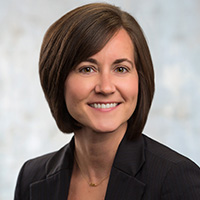“Study start-up timelines [had] been static for [many years] at about seven months. Now start-up timelines are even longer. The industry is trending slower,” says Ashley Davidson with Veeva Systems.
However, Davidson is undaunted. As director of the Vault Study Startup application at Veeva, and with many years of experience overseeing global study start-up groups, she’s confident that technology can change this trend.
While the industry overall may be suffering administrative lag, according to Davidson, “Technology can transform the study start-up timeline. The challenges of study start-up are known, but not enough people are taking” the issues to the next level and addressing them to improve the process. “With start-up, there’s a ‘critical path’—a specific set of milestones from one study to the next that shows the activity [and] the sequence of events that must occur to move the process forward.”
How does technology improve the process of start-up? “Technology provides a sort of GPS that guides and streamlines the process,” Davidson explains. She wants people to think of start-up as a mappable process with a clear beginning and endpoint. Technology excels at mapping the known steps in between, as well as at providing speed and efficiency.
GPS for Study Start-Up: The Importance of the Critical Path
Join Ashley Davidson of Veeva Systems at ACRP 2019 this April and get practical guidance on how technologies, best practices, and KPIs can proactively lead life-sciences organizations towards an entirely different approach to managing study start-up. With site activation cycle times worse than they were more than a decade ago, this is a session you do not want to miss.
The benefits of technology for start-up don’t end there. Systems are available that, as Davidson puts it, “are event driven and automated. When somebody logs in, the system tells them exactly what they need to focus on. It can seem like a big leap for people to go from spreadsheets to a technology like this, but it’s not. The systems are easy to use.”
For new users, Davidson recommends a “phased-in approach to get the most value out of the system as quickly as possible.” She says, “Technology can help achieve end goals while simultaneously meeting requirements. At the end of the day, it’s about making start-up faster and more efficient.”
Author: Michael Rizzo




